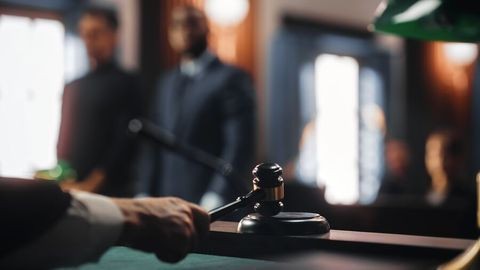In First State High Court Ruling, Massachusetts Supreme Judicial Court Finds No Coverage for COVID-19 Business Interruption Losses
Client Alert | 3 min read | 04.25.22
On April 21, 2022, the Supreme Judicial Court of Massachusetts, the highest appellate court in Massachusetts, affirmed the dismissal of the plaintiff restaurant operators’ COVID-19 business interruption claim in Verveine Corp., et al. v. Strathmore Ins. Co., et al. The Court held that COVID-19 related losses are not covered by a property policy that requires “direct physical loss of or damage to” property because “direct physical loss of or damage to” property “requires some ‘distinct, demonstrable, physical alteration of the property.’” Opinion at 15.
In evaluating whether there was any “direct physical loss of or damage to property” at the restaurants, the court found there was no reasonable interpretation of that policy language that could support the plaintiffs’ claims for business interruption coverage. Id. at 13. The court rejected the plaintiffs’ contention that coverage was available because the coronavirus was physical and had physical effects, noting that “the question is not whether the virus is physical, but rather if it has direct physical effect on property that can be fairly characterized as ‘loss or damage.’” Id. at 14 (emphasis in original). Significantly, the court noted that every appellate court that has reviewed COVID-19 insurance claims has agreed with its interpretation. Id. at 15. The court concluded that its interpretation of the policy was bolstered by the definition of “period of restoration,” which provides that coverage ends on the date when the property could be repaired, rebuilt or replaced with reasonable speed and similar quality or the date when business is resumed at a new permanent location, which, the court found, “clearly implies that the property has not experienced physical loss or damage in the first place unless there needs to be active repair or remediation measures to correct the claimed damage or the business must move to a new location.” Id. at 16.
In applying the phrase “direct physical loss of or damage,” the court concluded that the allegations did not trigger coverage under the policy because the suspension of business at the restaurants was “not in any way attributable to a direct physical loss or damage,” as there were no physical effects on the property, as demonstrated by the restaurants’ continuing ability to operate by providing takeout and other services. Id. at 17. According to the court, COVID-19 closure orders do not constitute direct physical loss or damage to property, id., and the mere presence of the virus on the surfaces and in the air at the restaurants “does not amount to loss or damage to the property.” Specifically, the court reasoned, the “[e]vanescent presence of a harmful airborne substance that will quickly dissipate on its own, or surface-level contamination that can be removed by simple cleaning, does not physically alter or affect property.” Id. at 18.
The court rejected the plaintiffs’ contention that the difference between “loss” and “damage” must mean that “loss” has a different scope of coverage that does not rely on physical alteration of property. That contention, the court explained, “ignores that the loss itself must be a ‘direct physical’ loss, clearly requiring a direct, physical deprivation of possession.” Id. at 20. And the court also rejected the argument that the existence of a virus exclusion in some policies creates a negative implication that policies without a virus exclusion should cover claims arising from the COVID-19 virus. “[N]o such negative implication can or should be drawn.” Id. at 21-22. Rather, the court found that its interpretation of “direct physical loss of or damage to property” does not render a virus exclusion meaningless, as it would have independent significance “where, for example, personal property, such as food, becomes physically contaminated or infected with a virus, requiring its destruction or some form of remediation.” Id. at 22.
Finally, the court concluded that the plaintiffs’ claim for civil authority coverage was also correctly dismissed because the COVID-19 virus did not cause “damage” to properties within one mile of the restaurants for the same reasons that the presence of the virus did not cause damage to property under the business interruption coverage provision. Id. at 24.
Contacts
Insights
Client Alert | 6 min read | 11.26.25
From ‘Second’ to ‘First:’ Federal Circuit Tackles Obvious Claim Errors
Patent claims must be clear and definite, as they set the boundaries of the patentee’s rights. Occasionally, however, claim language contains errors, such as typographical mistakes or incorrect numbering. Courts possess very limited authority to correct such errors. The United States Court of Appeals for the Federal Circuit has emphasized that judicial correction is appropriate only in rare circumstances, where (1) the error is evident from the face of the patent, and (2) the proposed correction is the sole reasonable interpretation in view of the claim language, specification, and prosecution history. See Group One, Ltd. v. Hallmark Cards, Inc., 407 F.3d 1297, 1303 (Fed. Cir. 2005) and Novo Indus., L.P. v. Micro Molds Corp., 350 F.3d 1348, 1357 (Fed. Cir. 2003).
Client Alert | 5 min read | 11.26.25
Client Alert | 6 min read | 11.25.25
Brussels Court Clarifies the EU’s SPC Manufacturing Waiver Regulation Rules
Client Alert | 3 min read | 11.24.25




